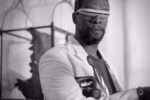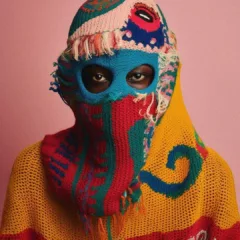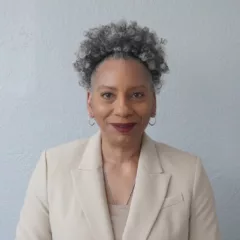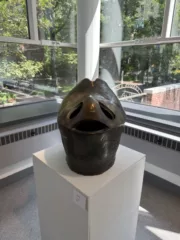Resonance–visual, musical, thematic–characterizes Darkwater Revival: After Terry Adkins, the current exhibition at the Arthur Ross Gallery. Conceived as an homage to the late revered University of Pennsylvania professor, who died tragically of a heart attack in 2014, the show contains work by Adkins as well as eleven young artists who trained with him. Adkins’ absence haunts the exhibition, but his presence is felt in each work.

Celestial harmonies
A pair of the late master’s works–two prints from the metal disk of a nineteenth-century music box–sets the tone for the entire exhibition. The untitled circular prints are perforated by tiny holes that would have determined the tune played by the music box. They look like cosmological maps, covered in unfamiliar constellations of tiny stars. As I studied the prints–which featured in Adkins’ 2002 exhibit Darkwater: A Recital in Four Dominions, A Recital after W.E.B. Du Bois, also at the Arthur Ross Gallery–I wondered what tune the music box would have played, and I became aware of music filtering in from the next gallery. The whole exhibition felt suffused by music, which is entirely appropriate given the importance of music and musical instruments in Adkins’ own work.
Drawn by the soft, dissonant notes played on a saxophone which seemed to emanate from a video screen planted in the ceiling nearby, I stood beneath the video, “Harmonic Spheres,” by Demetrius Oliver and Blanche Bruce. The video, placed perhaps a little too literally on the ceiling, depicts an abstracted, almost lunar landscape, but it felt like it had been detached from a larger context that would have given it a richer meaning.
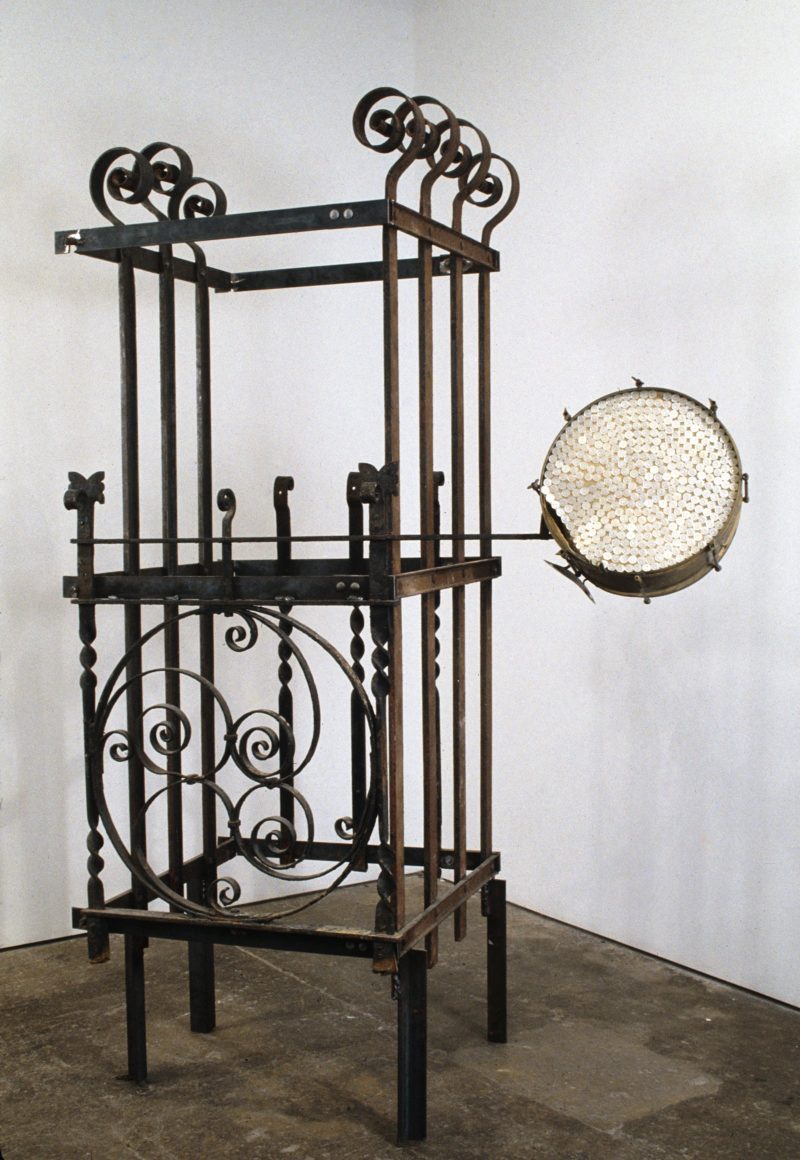
Situated in the center of the gallery like the fixed north star is Adkins’ haunting sculpture, “Sermonesque,” a towering, makeshift cage-cum-pulpit constructed of antique wrought iron. A skeletal container assembled from ornate, curving tendrils of wrought iron, the piece includes another important facet. Projecting from the metal frame is a torn snare drum, embellished with buttons. The drum’s circle echoes the music box print’s circles, and the little circular white buttons covering every inch also echo the musical spheres. But in context of “Sermonesque,” the buttons are both cosmic and prosaic, suggesting the individual members of the sermon giver’s congregation, tiny microcosms within the larger macrocosm of the universal church.
Another work from 2002’s Darkwater, the piece suggests the limitations of speech and language. This is both a pulpit and a cage, a place of speech and silence. The old wrought iron evokes memories of the anonymous and perhaps enslaved craftsmen who made it, the same history the W.E.B Du Bois calls up in his genre-defying 1920 work, Darkwater: Voices from Within the Veil. For Du Bois, iron is not only a symbol of slavery and subjugation, but also of artistry and accomplishment. He locates the origins of iron welding in ancient Africa, and sees wrought iron as the living legacy of the great kingdom of Benin, famous for its metalwork. Adkins’ work embraces these dichotomies, and his adaptation of found objects offers layers of history and craftsmanship.
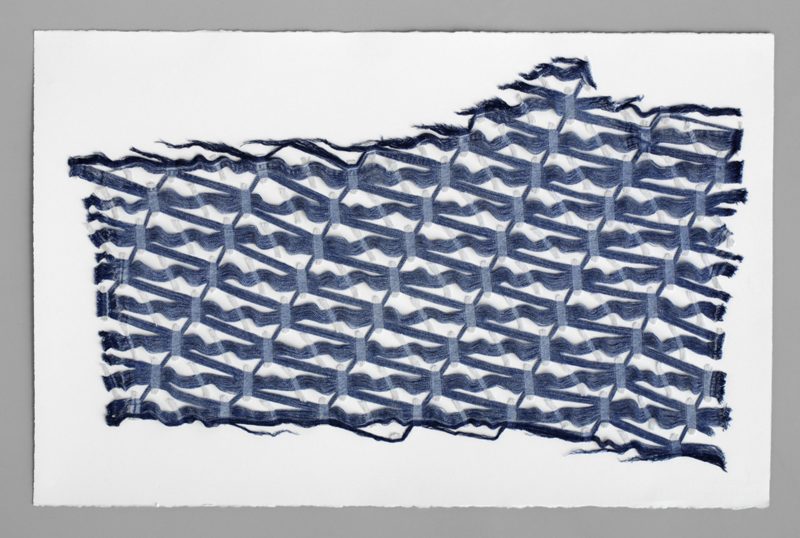
Hidden histories
Similar in their exploration of African and African-American history are the works by Sean Riley, who uses indigo, a natural dye with a rich blue color. Long cultivated in West Africa, indigo became a successful cash crop in the southern United States thanks to slave labor. Riley invokes this history in two textile works made from inherited fragments of denim in which the artist has pulled apart the horizontal weft threads, as if picking apart a tangled family history. The deconstructed denim fragments look like plant cells seen under a microscope, or flattened strands of DNA. The powerful materiality of these pieces evokes history that is both collective and deeply individual.
In their use of found objects with resonant layers of history, the artists assembled in Darkwater Revival show a clear debt to Adkins. From Sean Riley’s denim fragments, to Matt Neff’s found object assemblages, these artists tease apart the cultural DNA of objects to reveal hidden histories.
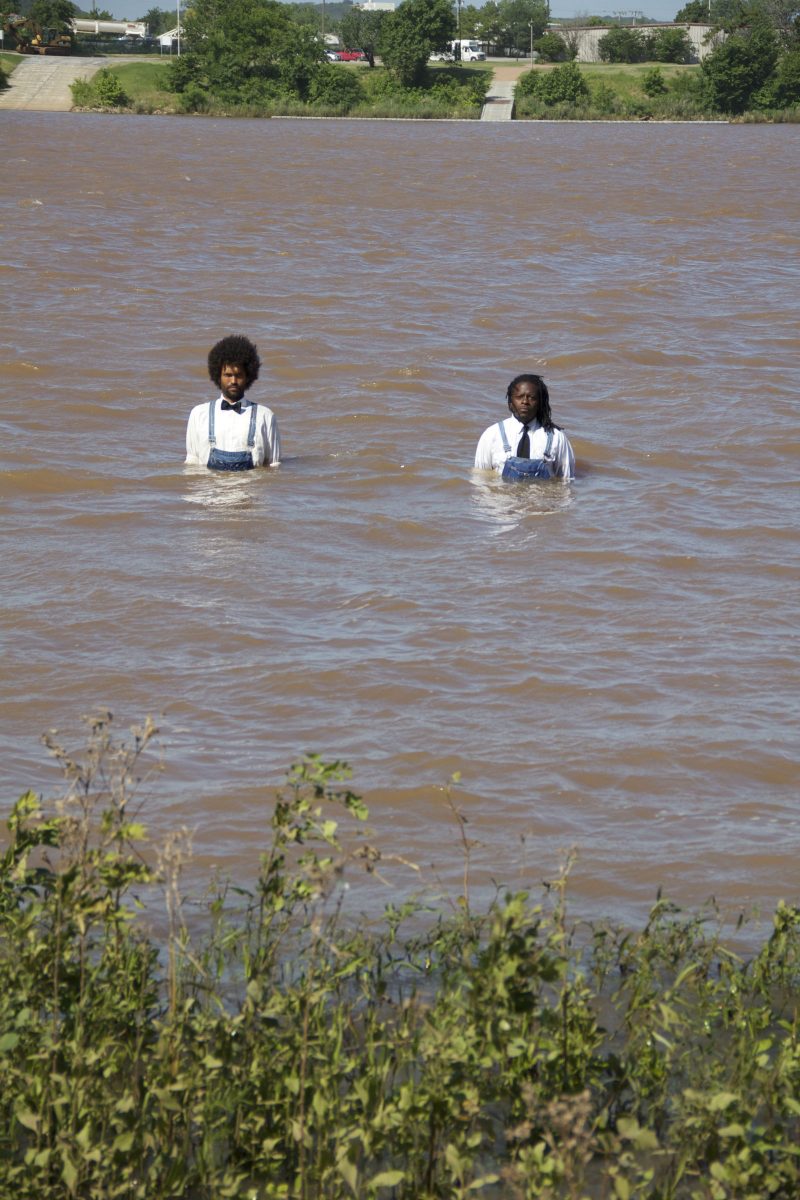
Historical traumas are evoked by the photographs of Amber Art’s co-founders, Ernel Martinez and Keir Johnston, whose 2013 performance “Dreamland Deferred” was the product of a residency in Tulsa, OK, and explored that city’s 1921 race riots, in which 300 black citizens were killed. Together with Philadelphia’s own MOVE bombing, the Tulsa massacre represents an example of government-sanctioned bombing of a civilian population. With their storm-ravaged buildings and figures who appear drowned at the side of a river, the photographs selected also evoke the more recent trauma of Hurricane Katrina.
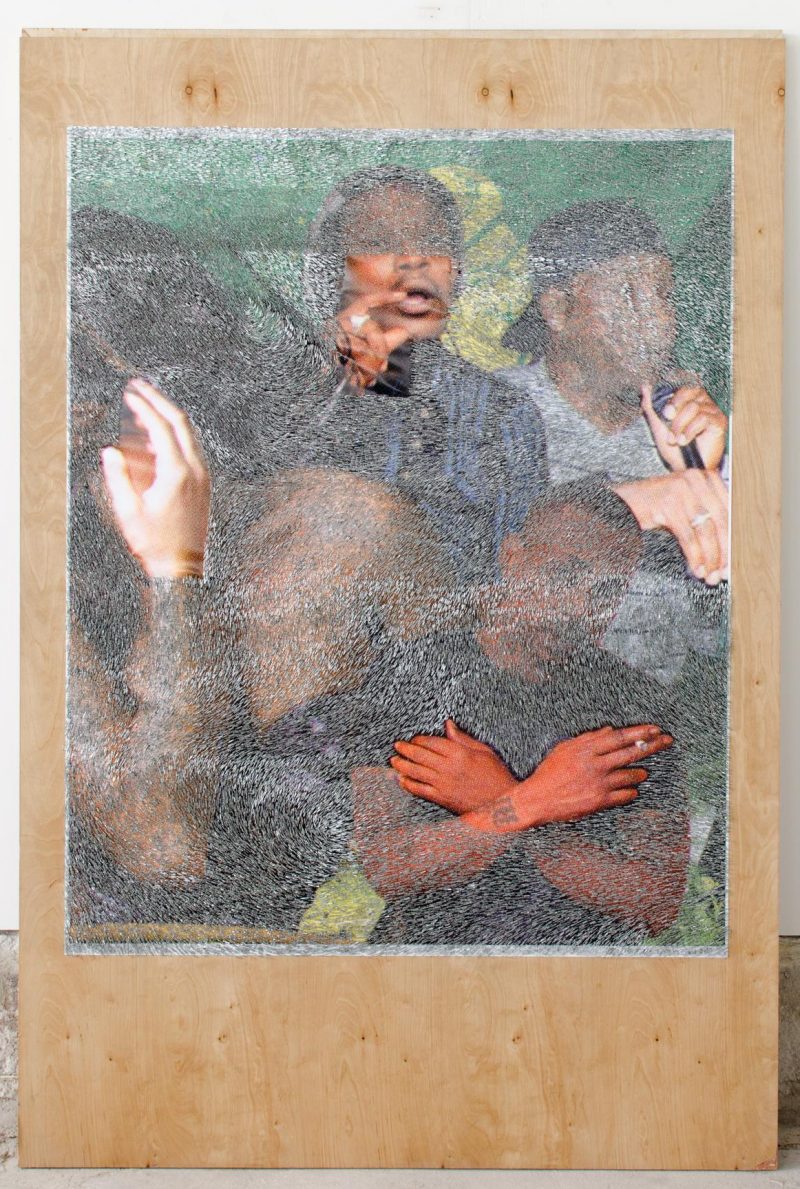
Power and speech
A trio of plywood panels bookend the exhibition. Propped casually against the wall, they bristle with thousands of heavy-duty staples, punched through the surface of the wood. Underneath, it’s possible to make out colorful posters, like those found along city streets advertising upcoming events or concerts. The product of hours upon hours of meticulous and physically taxing work, Wilson’s panels are meditative exercises as much for the viewer as the artist. Studying them, the staples became less of an opaque, impenetrable, and angry surface, and more a series of subtle patterns that engage with the imagery on the posters beneath them. Gentle curving waves of staples give way to rigidly vertical staples over the heads of figures, and sections of the posters remain free from staples–gesturing hands, an open mouth, a lifted microphone all hint at speech and silence. Like Adkins, Wilmer explores the power of speech and language, asking whose voices are silenced, and whose voices are heard.
As Adkins does in “Sermonesque,” Wilmer adds a rich layer of religious significance to the work. One poster bears the inscription “Isaiah 42: 18–22,” barely visible beneath the staples. The language of this passage from the Old Testament of the Christian Bible is particularly appropriate for Wilmer’s work, and speaks to the exhibition as a whole: “Hear, ye deaf; and look, ye blind, that ye may see.”
Beautifully curated by Dejáy D. Duckett, the distinct artistic personalities and pieces harmonize in subtle and unexpected ways, much like the music Adkins composed and performed with his Lone Wolf Recital Corps. Together, the harmonies create a sense of transcendence, casting the gallery as almost a sacred space, animated by the deep memories and hidden histories that Adkins and his students tap into. Others in the haunted and haunting show include: Jamal Cyrus, Nsenga Knight, Tameka Jenean Norris, Ivanco Talevski, Jessica Slaven, Matt Neff, and Sarah Tortora.
To paraphrase Terry Adkins himself, the artists of Darkwater Revival ask us to see music, and hear art, and offer a path to transcendence that takes us through the darkest byways of history.
Darkwater Revival: After Terry Adkins is on view at the Arthur Ross Gallery of the University of Pennsylvania, 220 S. 34th St., through December 11, 2016.


